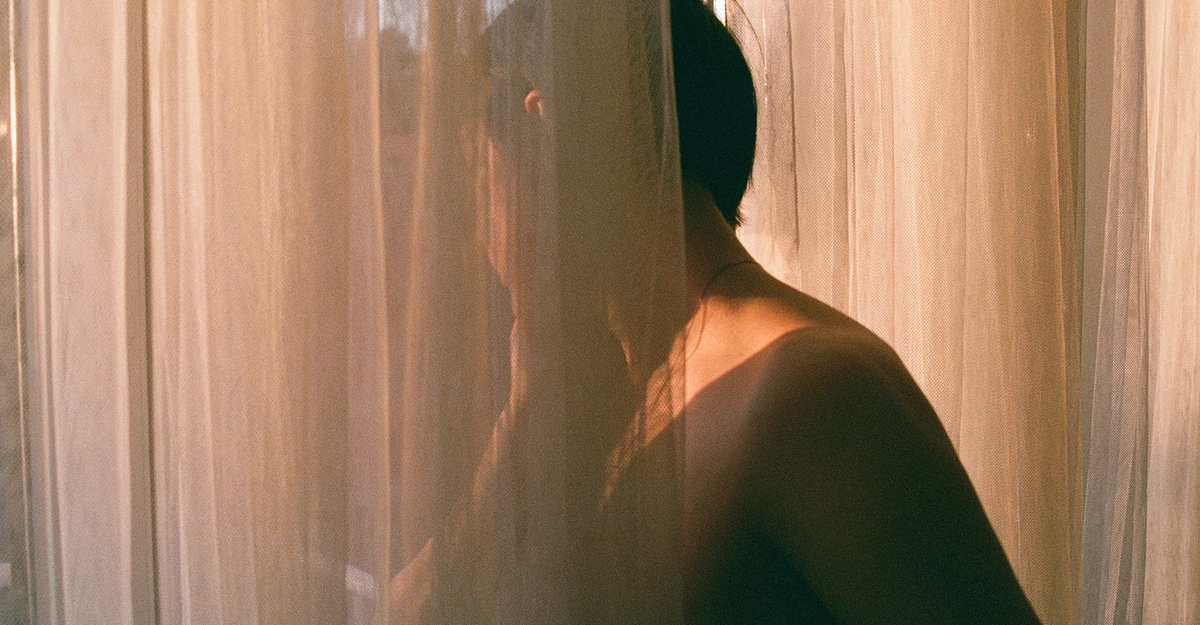
As Patricia Lockwood’s second novel, Will There Ever Be Another You, begins, the protagonist is visiting Scotland with her family. That will be her last moment of relative normalcy, because in the very next chapter, she catches COVID, which changes her dramatically. She has a fever that won’t go away, and struggles to recognize faces, write, and read. Its effects are so powerful that she wonders whether she’s become a different person.
First, here are four new stories from The Atlantic’s Books section:
This shape-shifting character is an avatar for the author herself. Lockwood also traveled to Scotland (and wrote about it in The Atlantic); she, too, had an intense bout of COVID with a weeks-long fever and lingering symptoms. Bekah Waalkes, in her review of the book, writes that the disease gives the protagonist the sense, “like a changeling”—an image that crops up frequently in the book—that she “has been taken and replaced by someone new.” In the novel, Lockwood writes of the illness: “Had it stolen her old mind and given her a new one? Had she been able to start over from scratch, a chance afforded to very few people?” Her character becomes not only a sicker version of herself but also a being who invents words, experiences strange connections, and makes wholly new art.
The possibility of personal transformation is a long-standing interest of Lockwood’s. The essay set in Scotland was adapted from her introduction to a new edition of Virginia Woolf’s To the Lighthouse, and sees Lockwood, her mother, and her husband tracking down Woolf’s presence on the Isle of Skye, on which that novel is set. Lockwood describes a sense of potential in Woolf’s portrait of the Ramsay family. Its matriarch’s “work is to make people magnificent,” she writes, “to make them believe in themselves, make them think they can do anything.”
Lockwood, too, imagines being a different person in Scotland, writing “everything familiar was a bit different there: fruit, flowers, ourselves.” She and her mother, uncharacteristically, buy a large melon. “Maybe this was the place where we would finally be the people who would crack open a melon for breakfast,” she muses, but they never do. Staying the same can be a disappointment—“We do not live the lives that we mean to live, in those elevated moments in the produce section,” she writes. In the novel, the long illness that her avatar experiences is unwelcome and unpleasant—but it’s also a catalyst for metamorphosis. The author approaches that intense change as an opportunity for her character to meet a new person, and does so with curiosity, open-mindedness, and humor.
Patricia Lockwood’s Mind-Opening Experience of Long COVID
By Bekah Waalkes
In her new novel, the author captures the strangeness of ordinary life for the chronically ill.
Read the full article.
What to Read
The Deltoid Pumpkin Seed, by John McPhee
Pilots get most of the public credit for a flight’s successes—but they couldn’t go anywhere without the behind-the-scenes heroes: engineers. McPhee has a rare gift for stepping into the astonishing obsessions of seemingly ordinary working people; here, he uses it to immerse the reader in a decades-long quest to build an entirely new type of aircraft. That potential vehicle, shaped like the titular pumpkin seed, was imagined as a combination of dirigible and airplane. Its siren call, as McPhee shows, was sometimes all-consuming, even life-destroying. In a saga that reaches from the Civil War to the 1970s, one acolyte after another grew convinced that he (this affliction appears to target men exclusively) would be the one who conquered the engineering challenge that had theretofore led only to ruin. Did anyone finally succeed? The fact that you aren’t reading these words in the passenger compartment of a dirigible-airplane hybrid gives you a clue, but McPhee’s storytelling makes readers hope that the mission will somehow pan out. — Jeff Wise
From our list: Six books to read before you get to the airport
Out Next Week
📚 Pick a Color, by Souvankham Thammavongsa
Your Weekend Read
The Trouble With Bad Bunny’s Puerto Rico Takeover
By Valerie Trapp
Yet Bad Bunny’s decision to host his shows in San Juan also had an uneasy layer of irony baked into it. By dubbing the event “I don’t want to leave,” he also necessarily meant You all have to come here. This travel prerequisite entails complexity for a place like Puerto Rico, which is already struggling with water shortages, the aftermath of Hurricane Erin, and rising housing prices due in part to the development of luxury rentals for tourists. (Tourism reportedly accounts for about 2 percent of Puerto Rico’s GDP, though other sources suggest this number could be larger; real estate and rentals are also billed as the second-largest contributor to Puerto Rico’s economy, at 19 percent.) Puerto Rico is just one of many places—among them Hawaii, Portugal, and the Dominican Republic—that are caught in a tourism trade-off: weighing the economic benefits and jobs that the industry can bring against its possible threats to cultural preservation, the environment, and housing markets, among other concerns.



